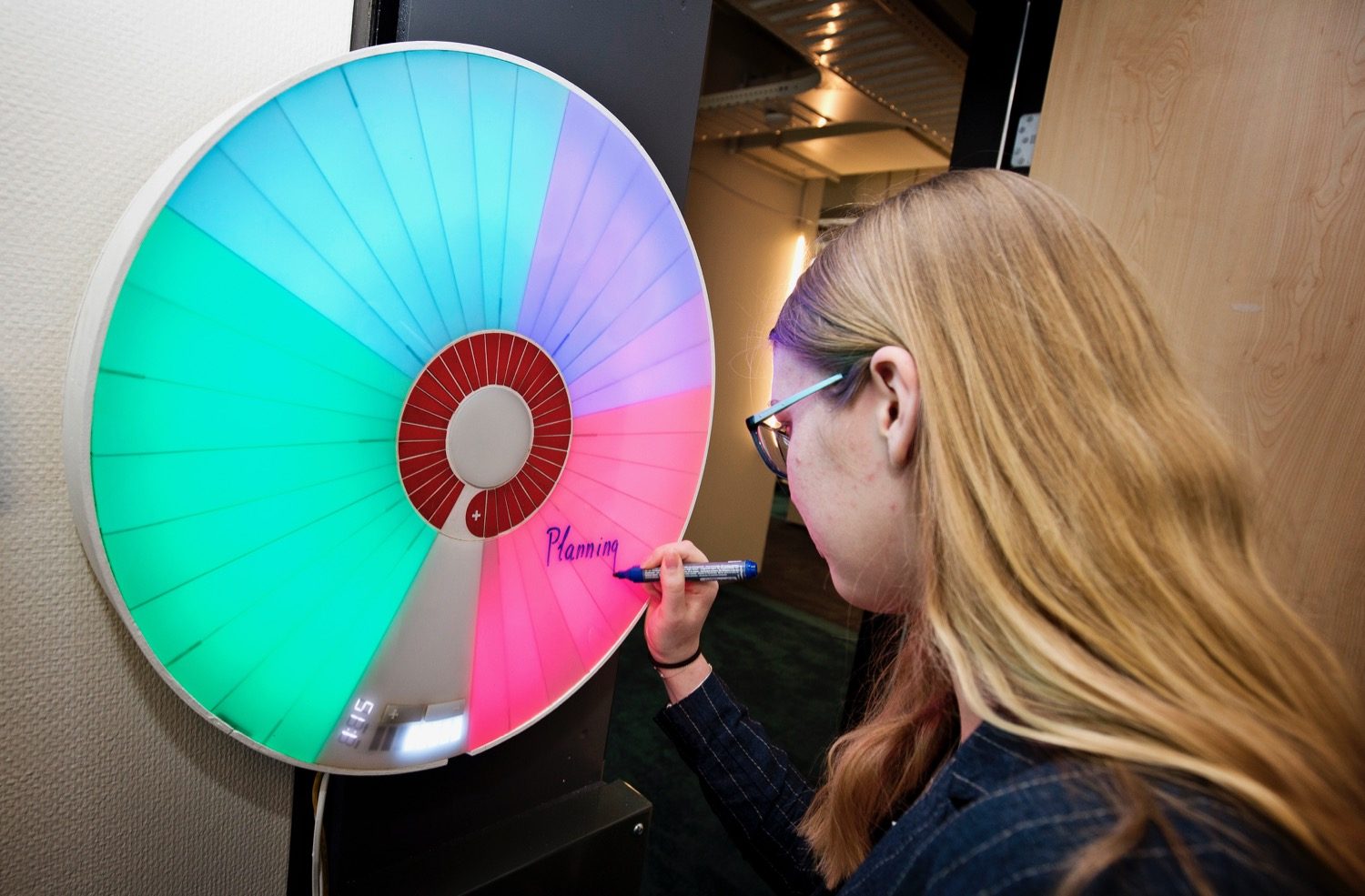
MEET
Students: Dorrit Bueters, Charles Elson, Tom Lim, Sanne van Vilsteren.
Coaches: Martin Havranek, Aadjan van der Helm, Wouter van der Hoog, Tomasz Jaskiewicz, Jakob Lehr.
Meetings are often hard to plan, and it is even harder to get everyone to stick to the same plan throughout. The majority of the time groups will overrun. Another problem of meeting room is that people cannot always see if a room is occupied, which, especially in a flexible environment, can be extremely disruptive for themselves as well as others.
At AMS, the second floor has a meeting room at the end of the office. We have designed and created a system which allows users to book this room, along with the ability to plan and organise meetings to increase productivity both in- and outside the meeting room.
MEET is a two-part modular device, situated both inside and outside the meeting room at the end of the second floor of AMS. The first module is dailyMEET, connected with the main booking system at AMS in which all users are able to book at meeting at any point in the near future. The dailyMEET will display the reserved time on the booking system using a clock like interface for the current day. In one glance you can see the schedule of the meeting room for the entire day.
MEETnow is a visual meeting timer and planner. Topics can be set and adjusted both before and during the meeting, providing flexibility. When a topic runs out of time the other topics will shrink to motivate the users to go to the next topic.
Both modules are connected to each other to create an interaction between the in- and outside of the meeting room. This makes it possible to see when the next meeting starts when inside the room and on the outside if a group schedules additional time if that is possible.
To show live data on the dailyMEET, the booking system is connected to the google calendar using a raspberry pi. The collected data is converted so the Arduino can work with it, which in turn, controls the visual output. To make sure the light is nice and even distributed the display is separated into 42 different sections after which a sheet of makrolon Dx covers the LED’s.
The touchpads in the MEETnow are made of copper and attached to wires leading to the capacitive touch sensors. These sensors can detect the touching of the copper pads. The data collected by these sensors is then sent to an Arduino which uses it to create a nice and intuitive interaction. The light distribution works the same as in the booking system.
To power all these LED’s two external power supplies are used. To make sure that the devices don’t overheat there are airholes in the back. Further to make the power supplies safe to work with the power input screws are covered with a 3D printed cover.
